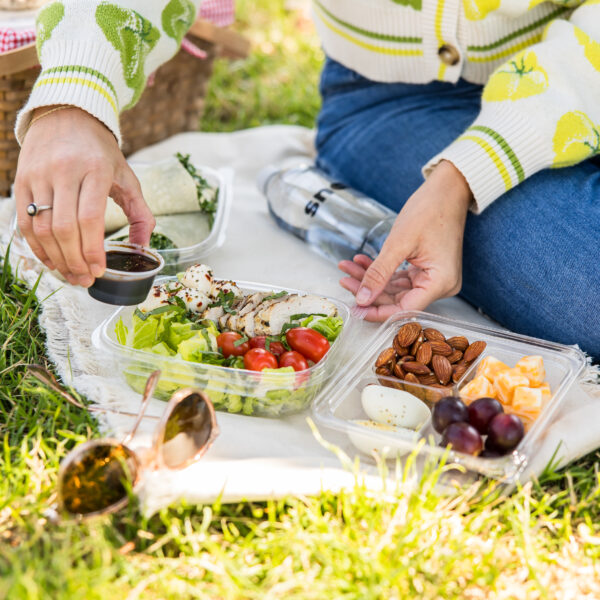I’ll be honest. Before starting to research this article, I had always used the terms ghee and clarified butter interchangeably. They’re the same thing, I thought. But there is a difference between the two, even if subtle. Put simply, all ghee is clarified butter, but not all clarified butter is ghee.
We’ve talked about ghee on the blog a lot lately. You can find more about what ghee is and how to use it on our blog.
What are the Similarities Between Ghee and Clarified Butter?
First, let’s talk about what ghee and clarified butter have in common. They both have the milk solids removed, making them great options for high-heat cooking, like roasting and sauteing. For the same reason, they also have a longer shelf life, and can even be stored on the counter without refrigeration.
Additionally, the nutritional benefits of ghee and clarified butter are nearly identical. Like butter, they contain vitamins A, E, and K, as well as both saturated and monounsaturated fat. They also have butyric acid and other short-chain fatty acids, which have been shown in preliminary research to benefit gut health and reduce inflammation!
Like butter, they contain conjugated linoleic acid (CLA), a fat that may help with fat loss, may be anti-inflammatory, and can benefit heart health.
Lastly, since ghee and clarified butter are primarily made up of saturated fat, they’re more stable and less likely to oxidize while cooking, making them a superior choice to almost all vegetable oils. (If you’re worried about saturated fat’s supposed link to heart disease, read here for more on the diet-heart myth.)
What is the Difference Between Ghee and Clarified Butter?
So, while the two have a lot of commonalities, what we’re really here for is how they actually differ:
- When making clarified butter at home, butter is cooked until the milk solids separate, then removed from heat and filtered into jars. To make ghee, you take this a step further by simply leaving the clarified butter to cook on the stove a little longer. When you do this, the milk proteins turn a dark golden brown and settle to the bottom of the pot, giving off a toasted aroma. This is when it’s time to strain!
- Given the extra cooking time, ghee has a nuttier flavor when compared to clarified butter.
- Geographically, ghee originated in India, while clarified butter is most often associated with France.
- When shopping at the store, you’re more likely to find ghee than clarified butter.
Ultimately, you can use ghee and clarified butter interchangeably in the kitchen. However, if you’re looking for an extra nutty boost, or trying to make a large plate of authentic tikka masala, ghee will offer subtle hints of flavor clarified butter cannot.
If given the choice between ghee or clarified butter, do you have a preference?





Leave a Reply
No Comments